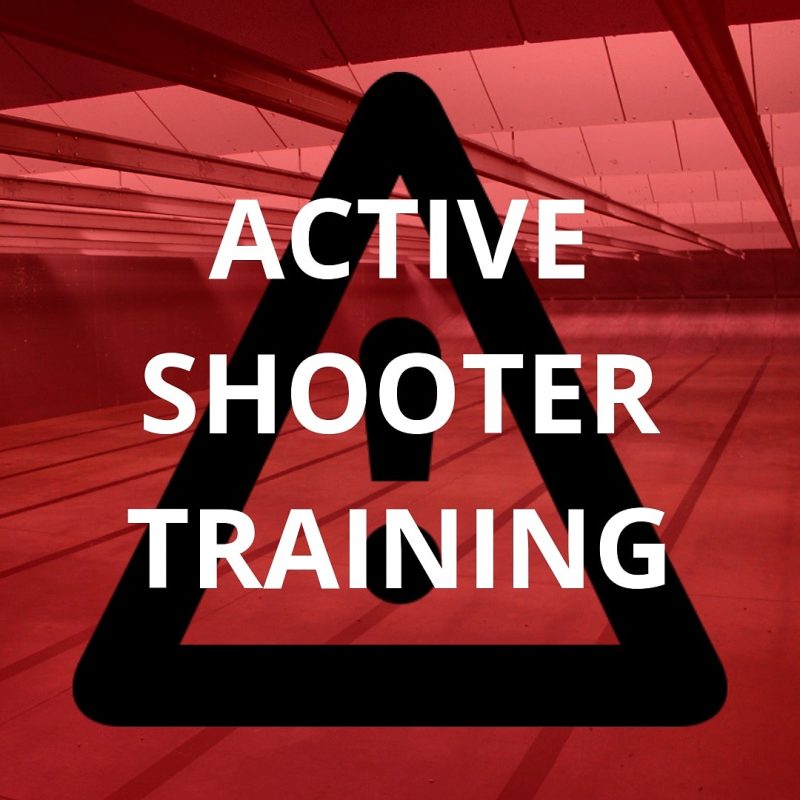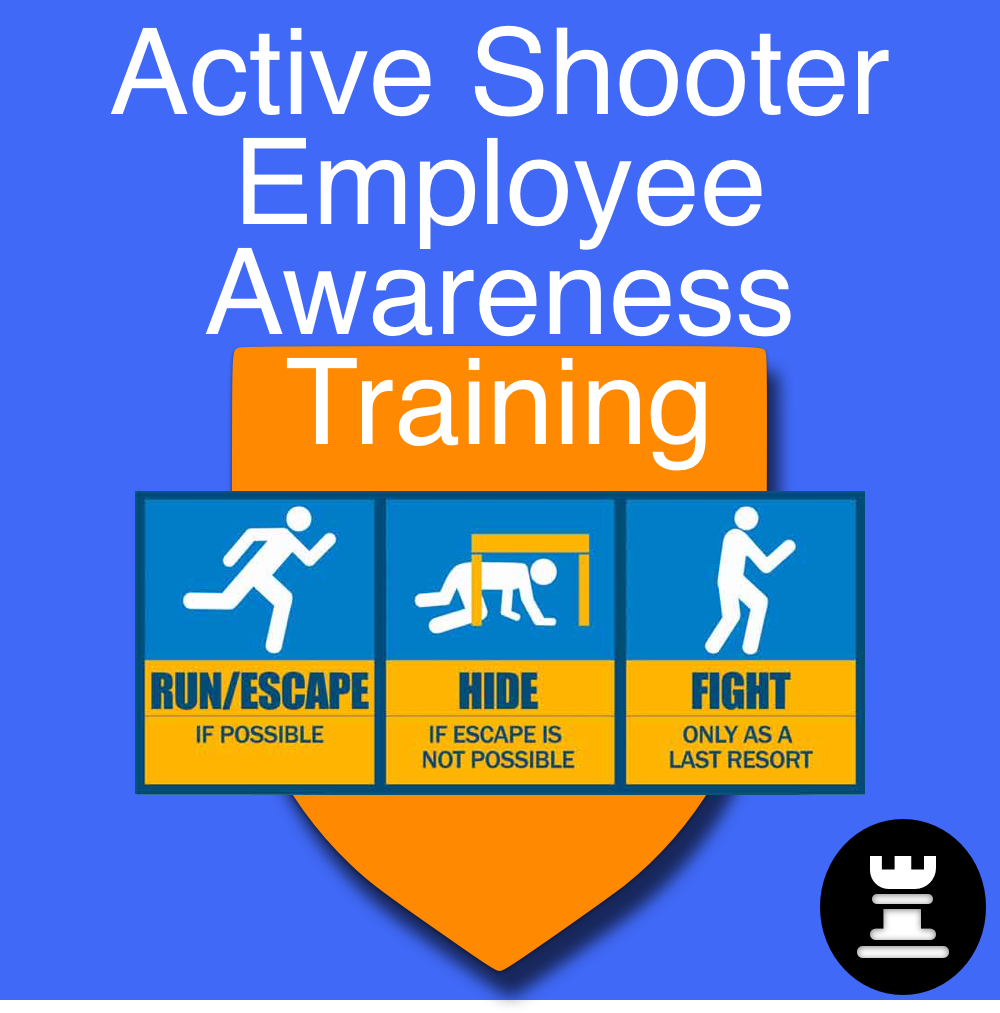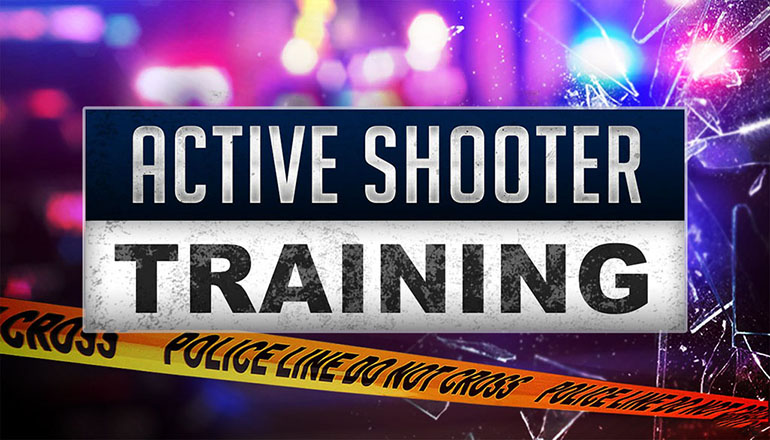Exactly How Active Shooter Training Enhances Emergency Situation Response Readiness
Exactly How Active Shooter Training Enhances Emergency Situation Response Readiness
Blog Article
Implementing Active Shooter Training: Ideal Practices for Creating a Safe and Prepared Area Atmosphere
As neighborhoods challenge the unsettling fact of energetic shooter cases, the implementation of extensive training programs ends up being critical. What are the critical components that can change a conventional training program into a robust model for neighborhood resilience?

Comprehending the Need for Educating
In an era noted by enhancing cases of violence in public rooms, understanding the requirement for active shooter training has never ever been much more critical. The occurrence of mass capturings across various environmentsâEUR" such as colleges, offices, and purchasing centersâEUR" underscores the seriousness for individuals and organizations to be planned for such emergency situations. Energetic shooter scenarios can unfold swiftly, leaving little time for people to react effectively. Therefore, thorough training initiatives can gear up individuals with the understanding and skills to react emphatically.
Training fosters a feeling of empowerment and readiness, making it possible for individuals to feel more safe and secure in their environments. The benefits of active shooter training expand past instant response; they consist of boosting communication procedures and improving total security steps within organizations.
Key Components of Effective Programs
Reliable energetic shooter training programs incorporate a number of vital parts that improve readiness and action capabilities. Initially, detailed curriculum growth is necessary, making certain that training material matters, evidence-based, and tailored to the specific requirements of the organization or neighborhood. This includes recognizing the characteristics of energetic shooter incidents and the mental effect on individuals included.
Second, reasonable training circumstances ought to be utilized to imitate prospective scenarios, allowing participants to exercise decision-making and response approaches in a controlled setting. These drills facilitate muscle mass memory and construct confidence among individuals.
Third, a concentrate on interaction methods is vital. Developing clear lines of interaction among legislation enforcement, emergency situation -responders, and participants makes sure coordinated responses throughout an occurrence. Routine updates and refresher training courses assist maintain communication pathways clear and effective.
4th, recurring examination and responses devices need to be incorporated right into the training program - active shooter training. Assessing the effectiveness of training through participant responses and efficiency metrics permits continual renovation
Lastly, fostering a society of security and preparedness within the community encourages vigilance and proactive measures, ensuring that individuals are not just experienced however additionally taken part in preserving a protected environment.
Engaging Community Stakeholders

To properly engage these stakeholders, it is essential to interact the objectives and advantages of the training. Hosting educational sessions can help make clear the training's purpose, address worries, and outline the duties each stakeholder may play. Creating a stakeholder advising committee can facilitate continuous dialogue, permitting for varied point of views and insights to be incorporated into the training program.
Structure relationships with neighborhood leaders and companies is also essential. Their assistance can improve outreach efforts, boost engagement, and make certain that training is customized to the unique demands of the community. In addition, stakeholders can help in disseminating info and resources, enhancing the message of security and preparedness.
Ultimately, involving area stakeholders not only strengthens the training initiative but also grows a sense of possession amongst homeowners, bring about a more resistant and educated area qualified of responding successfully to potential hazards.
Educating Delivery Techniques
Using a range of training shipment approaches is vital to accommodate the varied learning designs and needs of individuals in active shooter training programs (active shooter training). Efficient training can take numerous types, consisting of lectures, hands-on simulations, on the internet components, and interactive workshops. Each method serves a special purpose and can boost the total understanding experience

Online components use resource adaptability and availability, allowing individuals to find out at their own pace. These can include videos, quizzes, and conversations to evaluate understanding. Interactive workshops urge group discussions and analytic, promoting team effort and interaction skills.
Including a blended technique that integrates these approaches not only improves the training experience yet likewise guarantees that participants are better prepared to respond successfully in case of an energetic shooter situation (active shooter training). By attending to various finding out preferences, companies can produce an extra educated and responsive neighborhood
Continuous Analysis and Enhancement
Routine assessment and enhancement of active shooter training programs are important to keeping their look what i found importance and performance. As dangers develop, so must the techniques and techniques utilized in training. Continual analysis makes sure that training material reflects the newest knowledge on energetic shooter cases, integrating lessons gained from recent events and readjusting for emerging fads.
To promote this process, organizations need to establish responses devices that include participant examinations, professional reviews, and case debriefs. Gathering data on individual performance throughout drills and workouts is essential, as it highlights locations needing improvement and notifies future training sessions. Furthermore, engaging with legislation enforcement and emergency responders can give useful insights into the practicality and applicability of training protocols.
Consistently arranged reviews of training products and techniques ought to be mandated, fostering a setting of advancement and flexibility. Organizations should also encourage a society of ongoing understanding, where team members feel empowered to suggest changes based on their experiences. By devoting to continual evaluation and enhancement, companies not only improve the efficiency of their active shooter training programs but additionally enhance their overall commitment to safety and security and preparedness within the community.
Final Thought
In verdict, reliable implementation of energetic shooter training requires a thorough strategy that focuses on community involvement and sensible simulations. By developing tailored curricula, including diverse training techniques, and promoting cooperation amongst stakeholders, neighborhoods can improve preparedness. Continuous evaluation and comments systems are necessary for adjusting programs to arising threats, consequently enhancing general security. Eventually, a dedication to recurring training and renovation grows a society of vigilance and readiness, guaranteeing a much safer atmosphere for all neighborhood participants.
Report this page